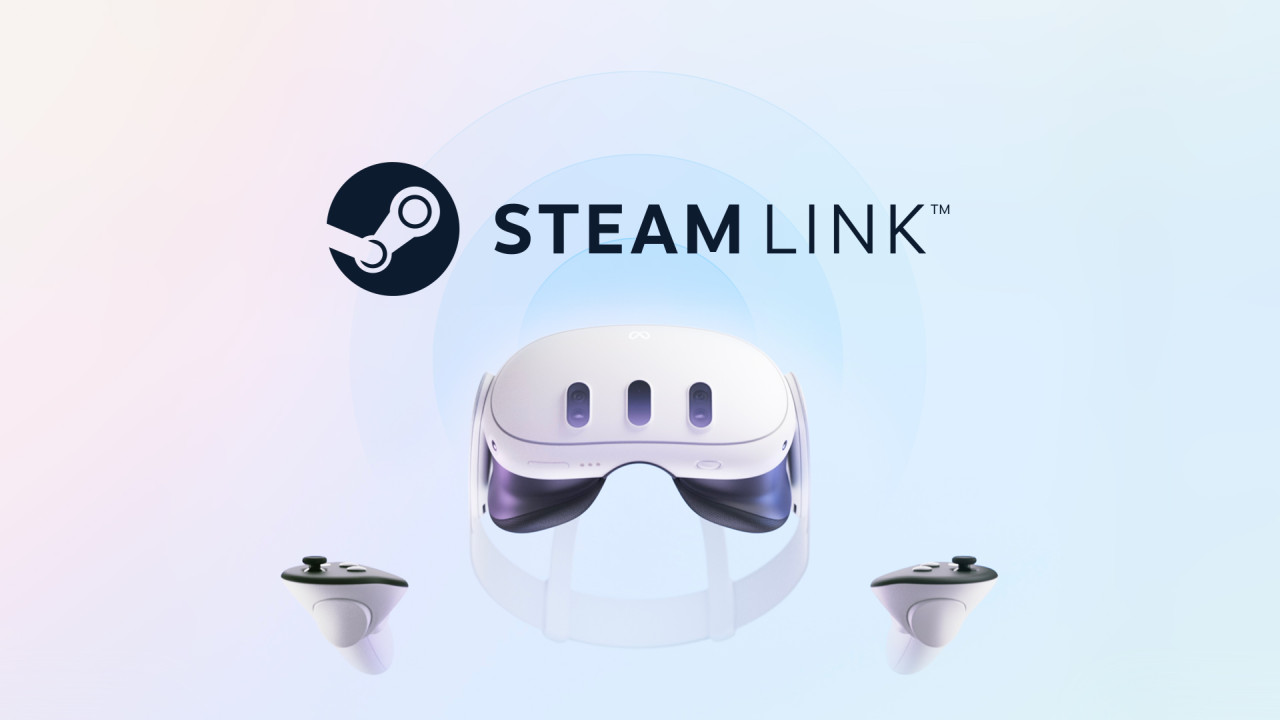Valve released Steam Link for the Meta Quest and it's a game changer!

Wireless PCVR
I've been an avid user of Virtual Desktop for quite some time now. Wireless PCVR with minimal latency is really something. Before spending 20 bucks and settling on Virtual Desktop, I took my time and tried every free option.
Virtual Desktop is king?
ALVR didn't work half the time. AMD Radeon ReLive for VR had extremely high latency and weird FOV issues. Oculus Air Link had a ton of overhead and felt generally sluggish to use. I also didn't like the idea of running Steam VR inside of Oculus VR just how I didn't like running Steam VR inside of Windows Mixed Reality when I dabbled with my first WMR headset. It just feels wrong.
Virtual Desktop on the other hand was reliable, fast and offered a ton of options to fine tune everything to my liking. Guy Godin, the mastermind who showed everyone how wireless PCVR had to be done, continues to improve Virtual Desktop to this day and while he can sound like an asshole, you have to hand it to him: He was a pioneer! Since the time I bought it Snapdragon Super Resolution, H.264+, HEVC, HEVC 10-bit, AV1 10-bit and an Open XR runtime were added.
To this day I don't regret having spent the money on Virtual Desktop. When it works, it works and you can use it for more than just PC VR, like watching movies on a big screen or, you know, working with virtual desktops.
Steam Link is on another level entirely!
However, now that Valve released their take on wireless PCVR I had to try it and I have to say: I am impressed! While it lacks some features of Virtual Desktop, as it's focused on the actual gaming side of things, it more than makes up for it where it matters most: Latency, image quality and ease of use. Virtual Desktop just doesn't come close!
When I first booted into Half Life: Alyx I literally couldn't believe my eyes. Gone was the smearing, gradients looked smooth, the image was sharp yet void of aliasing and even the darkest corridors didn't show any signs of compression blocks. How is this even possible?
One of the ingredients is probably the rather aggressive foveated encoding, which can be lessened to some extend, but can not be turned off completely. If it's indeed why the center looks so perfectly clean and is literally void of any artifacting, I don't think I would turn it off even if I could. Though having said that, I'm also using a Quest 2 with fresnel lenses, where the peripherals are blurry no matter what, and my opinion might be different if I had a Quest 3 with pancake optics. On a Quest Pro it utilizes eye tracking, though I don't know how great it works given the latencies involved.
Anyway, whatever Valve is doing with the compression is simply on another level. It's literally perfect. There is no visible compression anywhere. No color banding, no blocking, no smearing, just a perfectly stable image. How they pulled that off is beyond me.
Try it out yourself!
If you have a Quest, you owe it to yourself to try this one. It's free, it doesn't need anything other than the Steam Link on the Quest as well as the Steam VR runtime on the PC, and it looks and plays incredible.
If you have trouble setting it up then take a look at the support page, where a lot of useful info has been gathered.